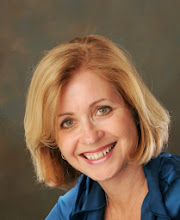More importantly, however, it outlined solutions. Here’s how it starts:
The silver tsunami. The age wave. The graying of America. Whatever cliché you want to use, the strain that the aging baby boomer population will place on the healthcare system in the near future has been well-documented and thoroughly discussed. Yet the industry as a whole remains surprisingly unprepared to care for a wave of new elderly patients who may fill as many as two-thirds of hospital beds in the next 30 years.
So that’s the problem, in a nutshell. Here are some of the recommended solutions:
Success Key No. 1: Look downstream
Tie in acute hospital care with other services like long-term care, hospice care, outpatient care and fitness programs.
Success Key No. 2: New models of care
The ACE program in Cleveland, OH, is a model for senior care that not only treats the whole person using an interdisciplinary approach, and incorporates principles of patient-centered care. It’s a program that is effective in reducing hospital and long term care stays – both things that seniors would applaud.
Success Key No. 3: Coordinate in the community
"One of the biggest challenges with the geriatric population is the handoff; the transition of care," says Barbara Looby, administrative director of senior health services at Crozer-Keystone Health System, a five-hospital system based in Drexel Hill, PA, covering 774 inpatient beds. "What happens when patients leave the inpatient hospital setting to go to an outpatient level of care, whether that's home care or another level of care such as nursing home or assisted living?"
Communication is vital, but so is training. The caregiver providing the care to the patient needs very specific training to ensure that the patient doesn’t end up right back in the hospital. Too often the elderly are discharged out of the hospital to untrained, inexperienced family members who are very willing, but not appropriately trained to provide quality follow-up care.
Success Key No. 4: Train physicians
Currently the US has a little over 7,000 geriatricians (specialists in geriatric medicine). It seems that med students see little reward in this field of practice and they’re right – it is one of the lowest paid specializations. The projected need for geriatric physicians to meet increasing demand is estimated at 36,000 by 2030. Making this more attractive to new, young physicians – and compensating appropriately – must begin happening soon for this need to be met.





No comments:
Post a Comment